Text
dropbox containing linguistics textbooks
contains 34 textbooks including etymology, language acquisition, morphology, phonetics/phonology, psycholinguistics, sociolinguistics, & translation studies
dropbox containing language textbooks
contains 86 language textbooks including ASL, Arabic, (Mandarin) Chinese, Croatian, Czech, Danish, Dutch, Estonian, Farsi, French, German, Greek, Hebrew (Modern & Ancient), Hindi, Hungarian, Icelandic, Italian, Japanese, Korean, Latin, Lithuanian, Norwegian, Polish, Portuguese, Punjabi, Romanian, Russian, Serbian, Slovene, Spanish, Swahili, Swedish, Tagalog, Thai, Turkish, Urdu, Vietnamese, Welsh
dropbox containing books about language learning
includes fluent forever by gabriel wyner, how to learn any language by barry farber, polyglot by kató lomb
if there’s a problem with any of the textbooks or if you want to request materials for a specific language feel free to message me!
32K notes
·
View notes
Text
Saying “sorry”- Levantine Arabic
Click on the transliteration for the audio
آسف | Āsif | I’m sorry (m; speaker)
آسفة | Āsfeh | I’m sorry (f; speaker)
آسفين | Āsfīn | We’re sorry
مو قصدي | Mū ʾaṣdī | I didn’t mean it
حقك علي | Ḥaʾʾak ʿalay | my bad (m; addressed)
حقك علي | Ḥaʾʾek ʿalay | my bad (f; addressed)
سامحني | Sāmiḥnī | Forgive me (m; addressed)
سامحنا | Sāmiḥnā | Forgive us (m; addressed)
بعدك زعلان؟ | baʿdak zaʿlān? | are you still upset? (m; addressed)
زعلتك بشي؟ | zaʿʿaltak bshi? | did I upset you with anything? (m; addressed)
عنجد ما كنت أعرف | ʿan jad ma kunt baʿref | I honestly didn’t know
ما بدّي اياك تزعل | ma beddi iyyāk tezʿal | I don’t want you to be upset (m; addressed)
ما بدّي اياك تزعلي |ma beddi iyyāki tezʿalī | I don’t want you to be upset (f; addressed)
ما رح اعيدها |Mā raḥ ʾaʿīdha |I won’t do this again
رح ادير بالي المرة الجاي |Raḥ ʾadīr bālī elmarra el jāi | I’ll be careful next time
201 notes
·
View notes
Text
01 RADICAL Vocab Flashcards
Thought i’d try a slightly different approach, particularly for the nouns to remember them. By breaking down individual meanings of the radicals within each character + pairing with a context driving trigger sentence. With Chinese, the radicals tell a story of how the word came to be, so perhaps looking at Chinese characters through that approach will encourage another level of long-term memory.
**Radical meanings are in bold + the vocabulary is CAPITALISED






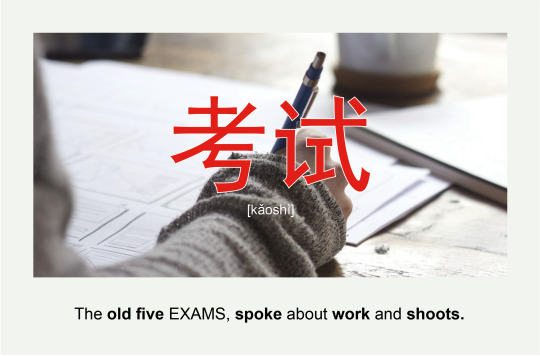




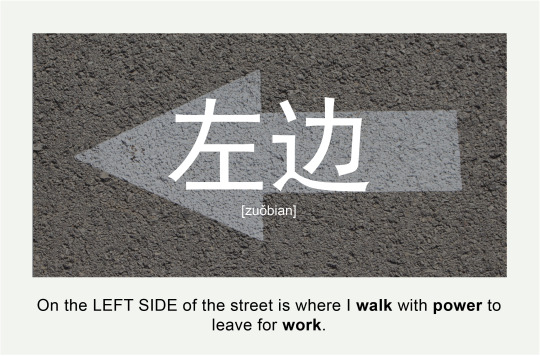

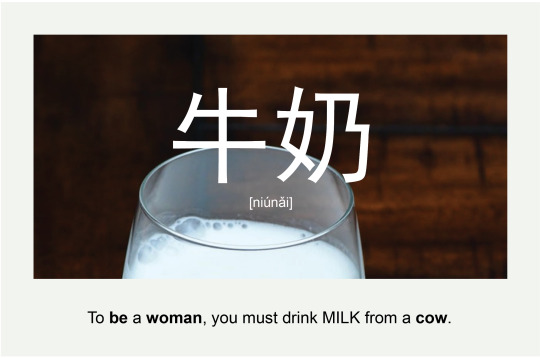




35 notes
·
View notes
Text
A Resource for Reading Practice: The Chinese Reading World

I wanted to share a resource for reading practice that I stumbled across recently. It’s called the Chinese Reading World, and it was a project led by the University of Iowa.
The site was put together from 2005 to 2008, so it’s not super up to date. However, there is a ton of content! Everything is sorted into 3 levels: beginning, intermediate, and advanced.
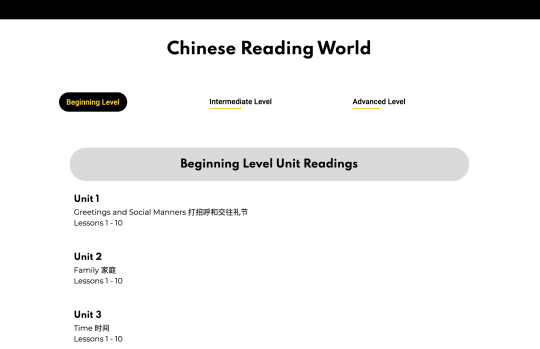
Each level has 30 units, and each unit has 10 lessons. The lessons begin with a vocab pre-test, then there is a reading with some comprehension questions. Lastly, there is a vocab post-test, which is the same as the initial test (at least for the lessons I’ve done so far). There’s audio for each lesson text, but unfortunately it can’t be streamed—you have to download it. There is also an achievement test at the end of each unit.
My experience has actually been that I already know all the words on the vocabulary tests, but the reading passages contain other words that I’m not familiar with.

So far, the readings I’ve encountered are not very long. This is nice since reading longer pieces can be frustrating at times. With shorter readings, you can just read 1 or 2 on some days and read more when you have more time/patience. I believe the readings are taken from Chinese newspapers.
Also, every unit has a theme. With 90 units total, there are bound to be themes that interest you. Example unit topics:
Directions and Asking Direction 方向和���路
Sports and Outdoor Activities 体育和户外运动
Chinese Music and Musicians 中国音乐和音乐家
Chinese Minorities and Local Customs 地方习俗和民族风情
Chinese Sports and Olympic Games 体育和奥林匹克
Contemporary Chinese Literature and Writers 中国当代文学和作家
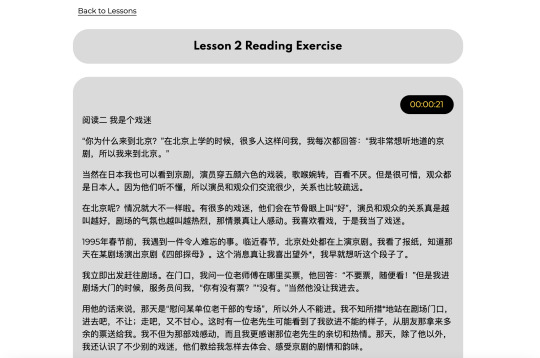
The 3 levels also each come with 5 proficiency tests. They seem to be based on vocabulary knowledge, so expanding your vocab is clearly a huge focus of this site. The only thing I’m unclear is about is I’m not sure exactly when the proficiency tests are meant to be taken. After completing all units? Or are they spaced out so you are supposed to take test 1 after the first few units, test 2 after the next few, etc.?

I’ve started working my way through the advanced section this week. With 300 advanced lessons alone, it really feels like I have an infinite number of articles to go through!
2K notes
·
View notes
Text




Sundays are for studying 📚 Grab a coffee and a good book ☕
4K notes
·
View notes
Text
lets give it up for pretentious bitches i love snobs who try to keep intellectualism alive gooooooo assholes
34K notes
·
View notes
Text
Event Posts + Culture/History Posts Masterlist
<Event Posts>
[2019]
Korean Independence day
추석(Chuseok)
추석 송편 특집 (Chuseok Songpyeon special)
개천절 Gaecheonjeol
Hangeul Day 한글날
Dokdo Day 10/25
[2020]
March 1st movement day (3.1절 Samiljul)
Corona Virus-what’s going on + Vocab List
Sewol Ferry Disaster (세월호 참사)
The April Revolution (4.19 혁명)
May 18th Democratization Movement (5.18)
Chobok(초복) First of the three dog days + Vocab List
제헌절 (Constitution Day)
Korean Independence Day 8.15 광복절
추석(Chuseok)
10/9 한글날
Halloween Post-Korean Ghosts and Monsters
동짓날 (Winter Solstice)
<Korean Culture & History>
Culture: Popular Korean Apps
History: Where to Learn
Culture: Korea’s flag, Taegeukgi
Art: Interview with a Korean Traditional Music Student
Learn Korean with K-dramas – Hotel Del Luna
Korean Slang 유행어
Kim Hongdo-Artist of Korea
History Traveling: Trip to Deoksugung palace
Korean Names
Korean Slang-Texting
Korean Surname Clans
Korean Snacks – Choco Pie (초코파이)
Korean Culture- K-pop
Learn Korean with Songs- Twenty Three (스물셋, IU)
Dalgona Coffee 달고나 커피
Korea’s hero, Admiral Yi Sun Sin (이순신 장군)
Korean Movie: Extreme Job (극한 직업)
Korean Gastroventures (맛집탐방)
Learn Korean with Songs-Butterfly(BTS)
Korean Movie-Dongju; The portrait of a Poet (동주)
Hanbok(한복) Korean Traditional Clothes
What’s on Korean Coins and Bills
Life as a Korean Student-Reading(Studying) room 독서실
Korean’s love of rice (밥심)
The climate of Korea (한국의 기후)
Korean Tales(전래동화)
A painter of the Joseon Dynasty, Shin Yun-Bok (신윤복) + Vocab
일월오봉도 (Ilwol Obongdo, painting only for the King)
Introducing Kimchi
돌잔치 (First Birthday Party)
Life as a Korean Student- Academic Grading system (9등급제)
Constellation and Korean Year counting method
Korean Traditional Poem, Sijo (시조)
Korean Traditional Beverages (한국의 전통 음료)
Korean Family Names (우리나라 성씨 소개)
Introducing Ramen in Korea (우리나라 라면 소개)
Korean Provinces and Cities
애국가 (Korean National Anthem)
Twelve Months in Pure Korean (순우리말) and more
Korean Age
Popular Study Apps in Korea (공부 앱)
121 notes
·
View notes
Text
A medio palo- halfway done/unfinished
This is a nice expression to sound more native when something is left undone.
9 notes
·
View notes
Note
my queen
Hey! I'm just wondering how often you come across this construction (h t t p s ://im gur. com/gallery/c28v2hv) and what's the best way of remembering/really understanding this. Thank you! (sorry for sending a link btw it's just easiest from my book)
I assume you're talking about the top page rather than the neuter gender
The neuter/neutral gender is harder to spot in Spanish since it typically ends in -o; it's easier to think of it as "agender" meaning that when you see lo, alguno, ninguno, esto, eso, aquello you're talking about a thing as a concept or an abstract idea, not as a thing
That's why you'll see por este motivo "for this reason" or por esta razón "for this reason" and then por esto "because of this" where no noun was actually used
If I had to guess it's talking about times when the noun isn't specifically stated and what you should do. In general, you treat it as agender which largely looks masculine aside from what I mentioned above, unless you have a specific noun in mind in which case you follow normal direct object pronouns lo, la, los, las
-
As for how often you use random feminine articles: fairly often, it depends on the phrase... The listed examples aren't totally the most common but I think I see what they're going for
In other words: the specific words/phrases sometimes, but the general concept they're describing - yes you see it a lot
As for the overall concept... I don't know if the source mentions this but what I think you're having a hard time with is why it's feminine plural. That's part of an overall linguistic trend in Spanish called femenino de indeterminación which is "feminine of/due to being undetermined"
It's a trend in Spanish that in some cases you will see a feminine object or adjective used in cases where there isn't something specific used as a noun
It's important to note that this is in the absence of a clear noun, which is why I can't 100% say that they're all necessarily accurate/necessary - jugárselas as "to risk everything" can also be phrased as jugárselo todo it's just with todo as a clear noun it keeps it as lo instead of las
But this can exist as adjectives or in singular or plural
Really common examples:
(tomar algo) a la ligera = (to take something) lightly, to not take seriously
a la buena de Dios = "left up to fate", "whatever happens happens" [lit. "to the good of God", but kind of like "however God wills it"]
por las buenas = the easy way por las malas = the hard way
a sabiendas = "knowing full well"
a solas = "one-on-one"
a escondidas = "in secret", "behind someone's back"
a secas = "no frills", "only", "with nothing else" [as an example if you said una milanesa de pollo a secas what you're describing is "a breaded chicken cutlet with nothing else" as in no sauce, no bread, no vegetables just a cutlet - that's what a secas means; with non-food things it comes out as "plain and simple"]
There's no specific reason why it's feminine. And two men could talk a solas and it's not a matter of any grammatical gender or agreement... it's more of a quirk that happens every so often with specific phrases like the ones you listed and the ones above
Another really common one that's a bit of a regionalism is saying pasarla bien [or more intense pasarla en grande] which is like "to have a great time", like vamos a pasarla muy bien "we're going to have a great time". Sometimes people use lo but la seems to be more common..... And I say it might be a regionalism because a different common expression is pasarlo bomba meaning "to have a blast" almost always with lo instead of la from what I can recall
Another, and I don't know if this is specifically Spain, is liarla parda which means "to make a mess (of something)" and some people use it as like partying "to tie one on" or "to go wild" or "to go on a bender" sort of thing, or it could possibly just mean to actually "make a mess". Literally though it's hard to explain; it means "to tie (a brown one)" but some people believe it meant "to catch a brown hare" [la here would be la liebre "hare", synonymous with el conejo "rabbit" in modern contexts; but pardo/a is specifically a brownish coloring in animals]... whether or not it's a hare, people use that expression as if it were feminine
Side Note: I would also say traérselas is more like "to be difficult to deal with" not necessarily treacherous in the way of will betray you but like "that will trip you up" or if it's a person it's like "they're a tough nut to crack" but it tends to be said of something rather than someone and it's like perplexing or confusing - they're working with limited space so I get it)
-
Out of those that I saw listed, the ones I see the most are vérselas, apañárselas or arreglárselas although this is the infinitive form and it's considered idiomatic and fairly advanced as far as language learning
For example - tendrás que vértelas conmigo is "you'll have to deal with me" which is like saying there will be a confrontation; the con is almost always with someone so in this case conmigo "with me", but could possibly rephrase the thing to say contigo "with you" or con (alguien) "with someone"... like ellos tendrán que vérselas con el rector "they'll have to deal with the principal"
To note further, the reflexive pronoun here is now te to adhere to tendrás which is also tú ...that's important because vérselas if you saw it by itself is infinitive showing that you use a reflexive pronoun here with it, but that it will apply to the subject... which is why I said tendrán que vérselas as plural, but it could be tengo/tendré que vérmelas "I have to deal with/face off against (something/someone)"
Another example as a command: apáñatelas which is something like "deal with it" but could be plural - apáñenselas [as in a sentence like apáñenselas ustedes solitos which reads like "you all figure it out by yourselves" or "you deal with it yourselves"]
...
So keep that in mind, if you're saying something like me las doy de chef "I'm something of a chef" or "I fancy myself a chef" etc it has to be in agreement with your subject; that's how reflexive pronouns work, but they use se in that infinitive form so you know that it takes reflexives
-
As far as why it is that way... I couldn't really tell you. People tend to believe that it's a substitute for la cosa or las cosas a lot of the time
With vérselas for example some people use the expression verse las caras which is "to face off against someone", literally "to see each others' faces" which is possibly why it's las
In most cases you can phrase it other ways or put a noun in and then it isn't feminine anymore, but some expressions like a sabiendas or a escondidas are so commonplace that you find them eventually... With verbal expressions it's something to be aware of as you go forward even if you're not totally comfortable reproducing it... and just know if you see it randomly feminine, that's a known thing
You can probably find more examples of it if you look up femenino de indeterminación though - what I could find was mostly all in Spanish or German so I didn't know quite how to recommend sources for further reading
21 notes
·
View notes
Note
thank youuu
Hey! I'm a bit stuck with the agreement with "Este tipo de + plural noun". When saying something like "This type of thing is my favorite." would I say "Este tipo de cosas es mi(s) favoritO or favoritAS? Does favorito agree with "este tipo" or "cosas" since "es" agrees with the collective noun, does the adjective also? Thanks!
It agrees with tipo:
Este tipo es mi favorito. = This type/kind is my favorite. Este tipo (de cosa/cosas) es mi favorito. = This kind (of thing/things) is my favorite.
The sentence itself is a bit ambiguous since there are some cases where you might choose to focus on cosas and I think there are some native speakers who would also get tripped up but, the de + noun is a kind of additional modifier for tipo - thus the root here is tipo and that's what is being focused on
You can also think about it with a completely different set of nouns:
Este libro de historia es muy caro. = This history book is expensive Este libro de ciencias sociales es muy caro. = This book of social sciences is very expensive. Los libros de química son caros. = The chemistry books are expensive. Esta antología de cuentos populares es muy famosa. = This anthology of popular stories is very famous.
The de + noun is almost like an adjective, qualifying [that is, "adding a quality to"] the noun
...
Where it gets a bit weird is sometimes with collective nouns you'll have the tendency to use the noun then talk about things/people in plural. It only really makes sense in contexts where you could be talking about either the collective noun or what's being "collected", as some contexts don't make sense [like "this is an extensive collection of artists"; it wouldn't make sense to think of artists as being extensive]
For people you might say... es un grupo de locos, son totalmente fuera de control "this is a group of crazy people, they're totally out of control" where you could do either... saying es totalmente fuera de control is "the group" while son is "they are"
But in a straight sentence like the one you described it should be singular
-
I will say that in general you tend to say este tipo de cosa fully singular; but if plural you might say estos tipos de cosas "these types of things"
In either case it will be tipo or tipos that count as the main nouns, not cosa/cosas
9 notes
·
View notes
Text
Unexpectedly Useful Verbs - Agotar
In most cases, agotar is used to mean “exhaust”, in the sense of cansarse which means “to become tired”. So, agotar is a stronger version of cansarse but that isn’t all it can mean.
Literally, agotar has to do with las gotas which means “drops” as in liquid. It means something closer to “drain” in this sense, but it’s used when things have been exhausted or tired out or a supply has gone dry. To say estoy agotado/a means “I am exhausted/drained”. It also carries the secondary meaning of “to be sold out” as in “a supply no longer exists”.
*Small Note: While agotar may be linked to liquids, it doesn’t mean an actual drain. Actual liquids are “drained” by using the verb desaguar which literally means “to pull the water out of” something. Agotar is more “deplete” than an actual drain.
Just note that there is the verb agotarse which has the same basic meaning as agotar but the emphasis on the subject is different. For agotar it means that “someone drained something”, emphasis on the subject. For agotarse it means “something was drained”, which places less emphasis on who received the action and more emphasis on the object.
The noun form of agotar is el agotamiento which refers to the “exhaustion” of someone but is usually more used when resources are depleted.
Estoy totalmente agotada; físicamente, emocionalmente y mentalmente agotada. - I’m completely exhausted; physically, emotionally and mentally exhausted.
Se agotaron las entradas. - The tickets are sold out.
Se me agota la paciencia. - I have no more patience. [very strong; stronger than yo no tengo paciencia para esto “I don’t have patience for this”.]
Dudo que se agote la leche en la tienda. - I doubt they’ll be sold out of milk in the store.
Somos amigos hasta agotar la existencia. - We’re friends until the end of time [literally, “until existence runs out”].
Se le agotó la gasolina. - He/She ran out of gas.
Ella agotó el agua. - She finished off the water.
12 notes
·
View notes
Text

I don’t know if you have it earlier on, but a young reader/teenage Spanish book list would be awesome (I know I learned more grammar rules in English from reading than anything else–or at least the reasons behind them)
I’ll do my best to recommend some books or stories or plays. I will warn you though that most of the books that I am recommending I read either in high school or college and so they require a bit of Spanish knowledge but they’re generally good reads.
Beginners
La casa en Mango Street / The House on Mango Street by Sandra Cisneros - Easily a fan favorite. You’ll love this book. The general story is that there’s a young girl who’s the daughter of immigrants who live on the “bad side of town” and she’s not a fan of the place she lives in, but it’s a beautifully structured book. It deals with being of immigrant parents in the U.S., the way this girl interacts with the other families around the streets and balancing her cultural identity with her identity as a person (of color) in the U.S. The book is made up of short chapters with a kind of poetic imagery, the way a child would see something so it’s kind of similar to To Kill a Mockingbird in that respect. It’s uplifting and fairly light.
Esperanza renace / Hope Rising by Pam Munoz Ryan - This story focuses on a double entendre. Esperanza is the name of the protagonist but it’s also the word for “hope”. Renace literally means “to be reborn”, similar to Renaissance. It plays a bit like The Grapes of Wrath if you’ve read that. It’s basically a story of a Mexican immigrant family and how they came to the U.S. for opportunity. Esperanza had everything before but now she’s in California with hardly anything. So it’s again a story about finding your identity.
Sonia Sotomayor: A judge grows in the Bronx by Jonah Winter and Edel Rodriguez or Mi mundo adorado / My Beloved World by Sonia Sotomayor herself. Both focus on Justice Sotomayor. The first one is a bit more for younger audiences in a way. It sort of looks like a children’s book but those are good for the basics. The second one is actually more along the lines of a memoir which is also good because it’s geared more towards adults, but it’s a bit more difficult.
Intermediate
Yo, la peor de todas / I, Worst of All ; La respuesta / The answer by Sor Juana Ines de la Cruz. Anything you can find by Sor Juana, you should read. Sor Juana writes poetry regarding religious philosophy and her place in the world as a woman in 17th century patriarchal Mexico. Her poems are usually easy to understand in terms of themes. The writing is simple to follow, though you might need a dictionary for the various words she uses. It’s also important to know the history of why she’s writing, but you can figure that out enough from her poems.
Las moradas del castillo interior / The Dwellings of the Inner Castle by Santa Teresa de Avila. If you’ve read Sor Juana before and liked her, you should check out Santa Teresa. She’s more or less the precursor to Sor Juana, living in 16th century Spain. She came under fire from the more traditional elements of Spain because she was a woman who loved to learn. At times she was branded a heretic and had to have her works looked over by the officials, so her style is poetic, profound, spiritual and much more humble than Sor Juana. Santa Teresa’s personal life is almost as interesting as her poetry, she’s famously known for her mysticism and the Christian term “ecstasy” is linked to her often. You might have to know things about mysticism versus Catholicism but that’s easy enough to research. Her legacy is reflected in her works and might’ve influenced Cervantes in some part.
La casa de Bernarda Alba / The House of Bernarda Alba ; Bodas de sangre / Blood Weddings ; La luna gitana / The Gypsy Moon by Federico Garcia Lorca. Federico Garcia Lorca is a famous Spanish poet and playwright from the 20th century in Spain. He’s most famous for his last work, the House of Bernarda Alba which is probably his best work. To understand his works, you have to know that Garcia Lorca was gay in a time when it wasn’t okay to be gay. As such, he’s often drawn to figures in society that evoke pain and suffering - gypsies, black people, women etc. A famous poem by his involves his trip to Harlem in NYC. He saw parallels to how black people were treated and devalued when he looked at the state of the gypsies and women in society and gay people like himself. Unfortunately, he was assassinated very soon after he finished The House of Bernarda Alba and his works always elicit some kind of pressure or longing or hidden desire. It does take some time to understand his symbolism; green = death, the moon = a knife, horses = life etc. But he portrays women sympathetically, women who are forced to live like nuns by other women who have the patriarchal values of the day ingrained in them from birth. It speaks a lot about cycles of oppression and the differences between what you want vs. what’s expected of you.
Assorted poetry by Ruben Dario - If you like modernism and post-modernism, you’ll have a lot of fun reading through things by Ruben Dario and his contemporaries. I think El cisne is probably his most famous one.
Assorted works of Gabriela Mistral - Very contemporary, feminist and very interesting. Her works center on loss, love, betrayal, familial love and usually work in the Latin American identity that was emerging at the time which is a mix of European and indigenous cultures in an industrializing world.
Assorted poetry by Pablo Neruda - The words that Neruda uses aren’t always so difficult, but thematically it’s a bit difficult. Still, any person who wants to major in Spanish gets acquainted with Neruda one way or another.
Doña Barbara by Romulo Gallegos. This one is a bit of soap opera in book form. It’s romantic, but it also contrasts love and the rugged and sometimes barbaric life on the fields in Venezuela. At times it’s melodramatic for my taste, but it generally has an overarching theme of “no matter what happens, we Venezuelans are proud people and we can do it!”
La casa de los espiritus / The House of the Spirits ; Eva Luna ; La gorda de porcelana / The Porcelain Fat Lady by Isabel Allende. Allende’s works are very modern and so they’re easy to understand in terms of it’s not ancient Spanish. Allende was related to President Salvador Allende of Chile who was assassinated in the uprising of a military regime led by Pinochet. So, many of Allende’s works focus on political regimes or the power that people exert over others. It mixes a sense of industrialization with the mystic, almost magical roots of Latin America in something known as “magic realism”. It basically reads like Tale of Two Cities in terms of politics happening a lot mixed with the strange things that happen in Edgar Allan Poe’s works. If you’re familiar with the movie Pan’s Labyrinth, it’s similar to that. La casa de los espiritus is my personal favorite although it’s very… strange at times.
Como agua para chocolate / Like Water For Chocolate ; Malinche by Laura Esquivel - Another magic realism book, this one focuses on the life of Tita, who wants to marry the man of her dreams but due to some family ritual, her lot in life is to take care of her mother until she dies. It involves the conflicting elements of individualism and the traditional roles (given to women) in Latin American culture. It also involves various strange things. In magic realism, a big staple is that weird things tend to happen as a… kind of cosmic catharsis. They correspond with a protagonist’s emotions and thoughts. So when Tita is upset and she’s making a cake, anyone who eats the cake starts to feel sad and weeps. There’s also one involving fire and sexual desire but… Also don’t read this on an empty stomach because there are recipes in it which serve to mirror Tita herself as a chef, her “role” as a caretaker, and the prominent element of a chapter. Malinche talks about La Malinche, who was a mistress of Cortes when he arrived in Mexico. She’s the translator who helped him and got almost zero credit except for scorn by everyone for helping Cortes. So Malinche is more of a historical one, but also showcases her smarts and brilliance in a historical setting.
Advanced
La vida es sueño / Life is a Dream by Pedro Calderon de la Barca. Calderon is a smartypants. Like, super smart. His philosophical works tend to be a bit over one’s head, but if you feel up to scratching your head, go for it. This play however is very nice. It works in themes from the Greek Tragedies like Oedipus into a historical drama mirroring Spain in the Golden Age. It takes place in Poland (because the seat of Spain’s power was in the Netherlands at the time and NOT in Spain) and it’s about a man who has been locked up in a tower for most of his life for reasons he doesn’t fully understand. It turns out his father heard a prophecy that his kid would ruin the kingdom. So it becomes one of those “well, I wouldn’t have if you hadn’t done this to me!” kinds of Oedipal stories but it’s a great look at metaphysics, hypothetical things and a roundup of Greek Tragedy as well as a nice history lesson.
El burlador de Sevilla y el convidado de piedra / The Trickster of Seville and the Stone Guest by Tirso de Molina - Here’s a personal favorite. It’s actually intermediate in terms of difficulty, but the fact that you need to understand some historical things like the fact that the Kingdom of Naples belonged to Spain at the time, or titles of nobility to fully understand the work makes it a bit less accessible than other works. It’s the story of Don Juan the playboy as he ruins lives of women and makes fun of their men who won’t stop being a butthole until he angers a statue. I can’t explain that without spoilers. But it shows the terrible side of Don Juan. Because Don Juan today is treated as this romantic guy who knew how to please women, but no, he was a guy who potentially ruined lives by sleeping around with married or soon-to-be married women and ruining their honor.
Works by Gongora & Quevedo. These two poets should be read together. Because they’re not bad. Really. Not bad. It’s just they fight like Nicki Minaj and Mariah Carey and go back and forth taking potshots at each other in their poetry.
Works by Juan Rulfo. Juan Rulfo is very famous. His works are smaller than say, Garcia Marquez’s, but yet they’re so complicated for people who aren’t familiar with his themes. It’s not really linear, so it makes it hard to understand at times, which ticks people off (me; it ticks me off when I have to read it because it’s worth the read it just makes you work for it) but it also deals with magic realism and lots of family drama.
Works by Julio Cortazar. Possibly more confusing than Rulfo at times (not often, but sometimes), Cortazar is a master of short stories and they’re good and interesting but sometimes you don’t know exactly what just happened so you have to read it four times.
Works by Jorge Luis Borges. Jorge Luis Borges is a great writer although very convoluted at times. He likes to play out different venues in his stories, not all of them are in Latin America. But they usually carry a moral or some kind of grand theme. It’s just that you could literally read it six times and you’d still need to look up what just happened. His books sometimes have political themes, so you might have to be aware of that.
Works by Gabriel Garcia Marquez. By far the best and worst book to read in modern Spanish is Cien años de soledad or 100 Years of Solitude. He wrote other stories but none quite as famous as this, though, the General in His Labyrinth is also good if you know the history of Simon Bolivar. This book is beyond convoluted but worth it. It’s magic realism but the problem here is that multiple main characters have the same name or some variation of the name. It’s done to evoke a “vicious cycle” motif, yes, but it makes it confusing. My copy is full of sticky notes and it has a family tree page so you can tell which character was born when. Literally, the best and the worst thing you could read in modern Spanish, it’s like Tale of Two Cities or War and Peace. You should read it, but clear your schedule.
El conde Lucanor / Tales of Count Lucanor by Don Juan Manuel. This is written in the 14th century, so the language is a bit flowery which makes it tough. It’s written in didactic style which is a fancy word for “these are proverbs so there’s a moral”. It’s not light reading but it’s… lighter reading.
Works by Miguel Cervantes de Saavedra. By far the most famous work by Cervantes is Don Quijote but Cervantes wrote a lot of works and poetry and at times entremeses (which are intermission vignettes done by puppets for big productions of plays known as autos in Spanish). Don Quixote (the English spelling) is a long, long book. It’s not hard reading in that once you start picking up the vocabulary related to knights, horses and the veiled references to historical events, you’ll be fine. It’s just that it uses Spanish poetics and vosotros form so at times you might be lost. This is the story of a man named Don Quijote, who’s a hidalgo, who goes crazy from reading books of knighthood (Santa Teresa’s love of books of knighthood was looked down upon as a bad influence on her mind; hence why I said she might’ve influenced Cervantes) so he decides that he’s going to be a knight, grabs his neighbor and picks some random lady to be his lady-love who might actually be a prostitute and they go off on adventures. There are multiple funny things that happen, people who play into the fantasy, stories within stories and there’s so much dramatic irony you might get tired of it. The second part is a lot more concise than the first since Cervantes was probably dying when he wrote the second part. It’s more to the point and it’s upsetting and sad at times but it’s still light-hearted at others. It’s famous for representing dualities of “what should happen” versus “what actually happens” making Cervantes a master of irony.
Fuenteovejuna by Lope de Vega. Lope de Vega is the exact opposite of Cervantes. Cervantes wrote for the purposes of thought provocation. Lope de Vega made plays and plays were only popular if you appealed to a crowd. So, his plays are often raucous, melodramatic and they deal with things that are important in society like vengeance, love, fighting and sometimes have very prominent female roles. Fuenteovejuna is the name of a city ruled by Isabel and Ferdinand who gets taken over by the Commandant/Comendador guy who is interested in having sex with all the women and having a harem. So it becomes “are we allowed to oust a bad person even if they work for the king?” It also deals with some political intrigue involving Portugal and some historical inaccuracies. Just a side note if you want to read it - at one point they’re in Castile but they go to Ferdinand for help. Which is wrong. Ferdinand is the King of Aragon. Isabella is the Queen of Castile, so she has control over Castile and NOT her husband. But they go to Ferdinand because he’s the man, I digress. It’s funny, at times shocking (for it’s time) and like watching a telenovela. Fuenteovejuna means “source of sheep”, although that’s just a city name it does have a more literal definition of “are you sheep blindly following things?” Though Lope de Vega wasn’t anarchist; it just means power belongs to the rightful ruler not a pretender.
Comentarios reales de los Incas / Real (or Royal?) Commentaries of the Incas by El Inca Garcilaso de la Vega. This is my personal favorite, but it’s loaded with history so you need to be up on that if you want to read this. It talks about the life and the history of the Inca people told by someone of mixed blood, who talks about the inaccuracies that the Spaniards had when they wrote their history of the conquest of Peru. It’s part legends and history, part storytelling and sometimes poetry. It’s very good although sometimes difficult to understand at times.
120 notes
·
View notes







